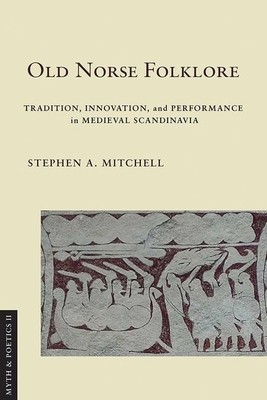
- We will send in 10–14 business days.
- Author: Stephen A Mitchell
- Publisher: Cornell University Press
- ISBN-10: 1501773399
- ISBN-13: 9781501773396
- Format: 15.2 x 22.9 x 2.4 cm, hardcover
- Language: English
- SAVE -10% with code: EXTRA
Reviews
Description
The medieval northern world consisted of a vast and culturally diverse region, both geographically, from roughly Greenland to Novgorod and culturally, as one of the last areas of Europe to be converted to Christianity. Old Norse Folklore explores the complexities of this fascinating world in a series of case studies and theoretical essays to connect orality and performance theory to memory studies and from myths relating to pre-Christian Nordic religion to innovations within late medieval pilgrimage song culture.
Old Norse Folklore provides critical new perspectives on the Old Norse world, some of which appear in this volume for the first time in English. Stephen A. Mitchell presents emerging methodologies by analyzing Old Norse materials to offer new and better understandings of this kind of evidence. He examines, interprets, and re-interprets the medieval data bequeathed to us by posterity--myths, legends, riddles, charms, court culture, conversion narratives, landscapes, and mindscapes--targeting largely overlooked, yet important sources of cultural insights.
EXTRA 10 % discount with code: EXTRA
The promotion ends in 20d.16:27:38
The discount code is valid when purchasing from 10 €. Discounts do not stack.
- Author: Stephen A Mitchell
- Publisher: Cornell University Press
- ISBN-10: 1501773399
- ISBN-13: 9781501773396
- Format: 15.2 x 22.9 x 2.4 cm, hardcover
- Language: English English
The medieval northern world consisted of a vast and culturally diverse region, both geographically, from roughly Greenland to Novgorod and culturally, as one of the last areas of Europe to be converted to Christianity. Old Norse Folklore explores the complexities of this fascinating world in a series of case studies and theoretical essays to connect orality and performance theory to memory studies and from myths relating to pre-Christian Nordic religion to innovations within late medieval pilgrimage song culture.
Old Norse Folklore provides critical new perspectives on the Old Norse world, some of which appear in this volume for the first time in English. Stephen A. Mitchell presents emerging methodologies by analyzing Old Norse materials to offer new and better understandings of this kind of evidence. He examines, interprets, and re-interprets the medieval data bequeathed to us by posterity--myths, legends, riddles, charms, court culture, conversion narratives, landscapes, and mindscapes--targeting largely overlooked, yet important sources of cultural insights.


Reviews